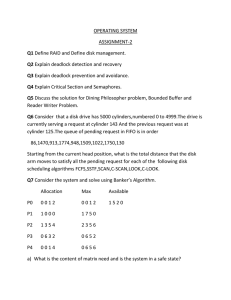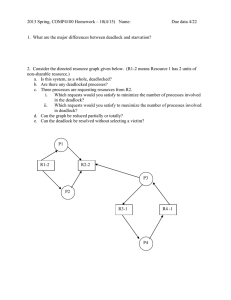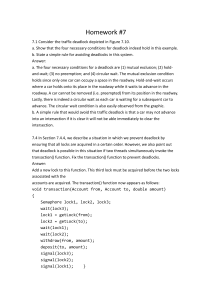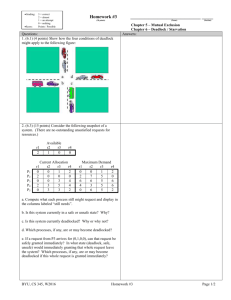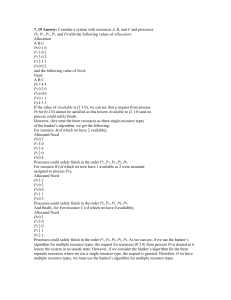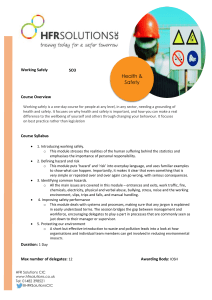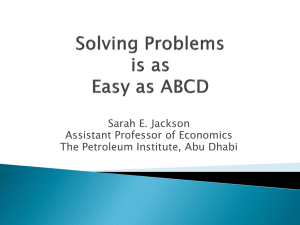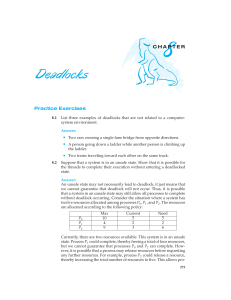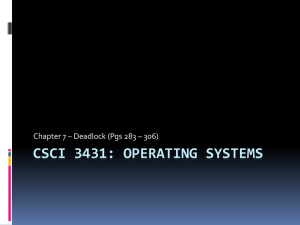possibility neither
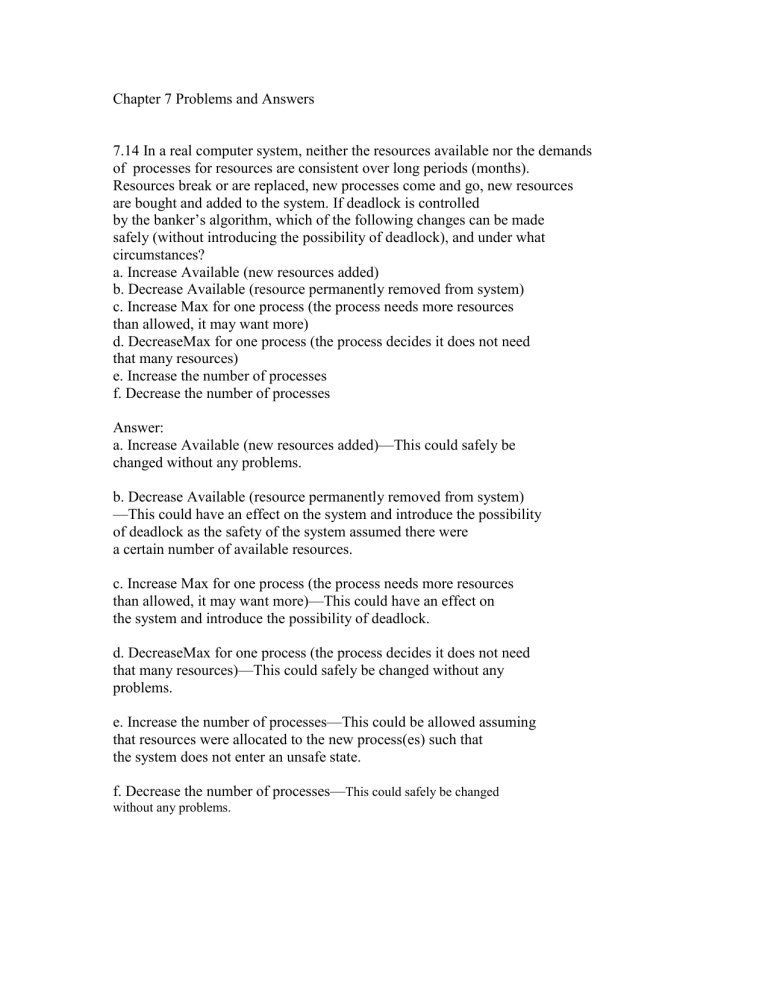
Chapter 7 Problems and Answers
7.14 In a real computer system, neither the resources available nor the demands of processes for resources are consistent over long periods (months).
Resources break or are replaced, new processes come and go, new resources are bought and added to the system. If deadlock is controlled by the banker’s algorithm, which of the following changes can be made safely (without introducing the possibility of deadlock), and under what circumstances? a. Increase Available (new resources added) b. Decrease Available (resource permanently removed from system) c. Increase Max for one process (the process needs more resources than allowed, it may want more) d. DecreaseMax for one process (the process decides it does not need that many resources) e. Increase the number of processes f. Decrease the number of processes
Answer: a. Increase Available (new resources added)—This could safely be changed without any problems. b. Decrease Available (resource permanently removed from system)
—This could have an effect on the system and introduce the possibility of deadlock as the safety of the system assumed there were a certain number of available resources. c. Increase Max for one process (the process needs more resources than allowed, it may want more)—This could have an effect on the system and introduce the possibility of deadlock. d. DecreaseMax for one process (the process decides it does not need that many resources)—This could safely be changed without any problems. e. Increase the number of processes—This could be allowed assuming that resources were allocated to the new process(es) such that the system does not enter an unsafe state. f. Decrease the number of processes— This could safely be changed without any problems.
7.20 Consider the following snapshot of a system:
Allocation Max Available
A B C D A B C D A B C D
P0 0 0 1 2 0 0 1 2 1 5 2 0
P1 1 0 0 0 1 7 5 0
P2 1 3 5 4 2 3 5 6
P3 0 6 3 2 0 6 5 2
P4 0 0 1 4 0 6 5 6
Answer the following questions using the banker’s algorithm: a. What is the content of the matrix Need? b. Is the system in a safe state? c. If a request from process P1 arrives for (0,4,2,0), can the request be granted immediately?
Answer: a. What is the content of the matrix Need? The values of Need for processes P0 through P4 respectively are (0, 0, 0, 0), (0, 7, 5, 0), (1,
0, 0, 2), (0, 0, 2, 0), and (0, 6, 4, 2). b. Is the system in a safe state? Yes. With Available being equal to (1,
5, 2, 0), either process P0 or P3 could run. Once process P3 runs, it releases its resources, which allow all other existing processes to run. c. If a request from process P1 arrives for (0,4,2,0), can the request be granted immediately? Yes, it can. This results in the value of
Available being (1, 1, 0, 0). One ordering of processes that can finish is P0, P2, P3, P1, and P4.
